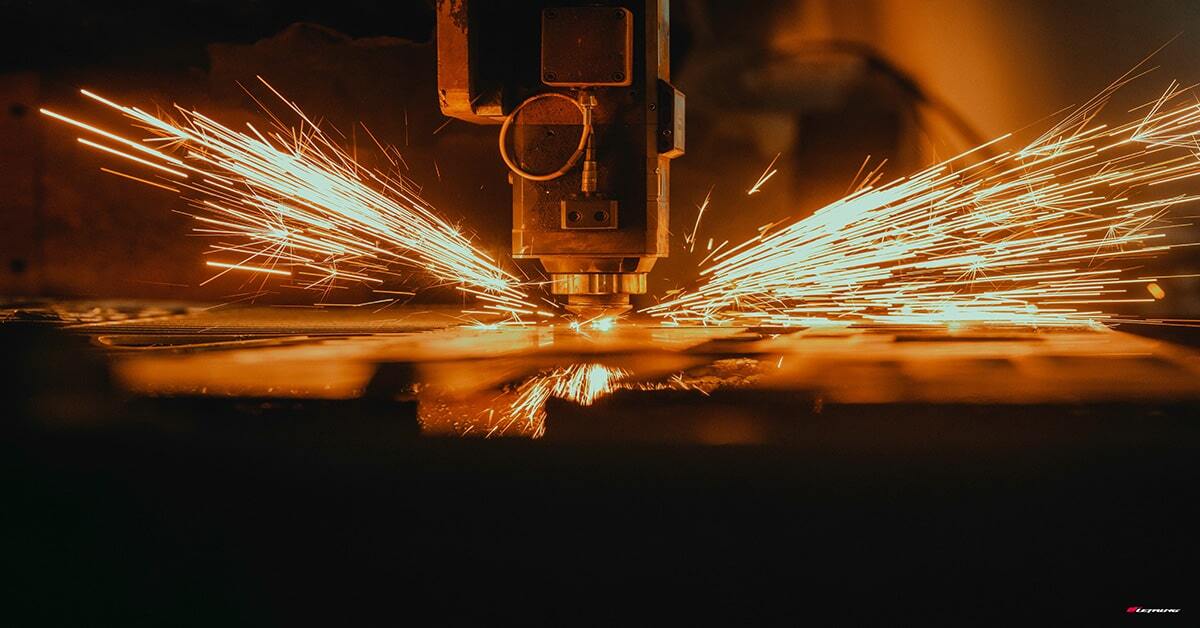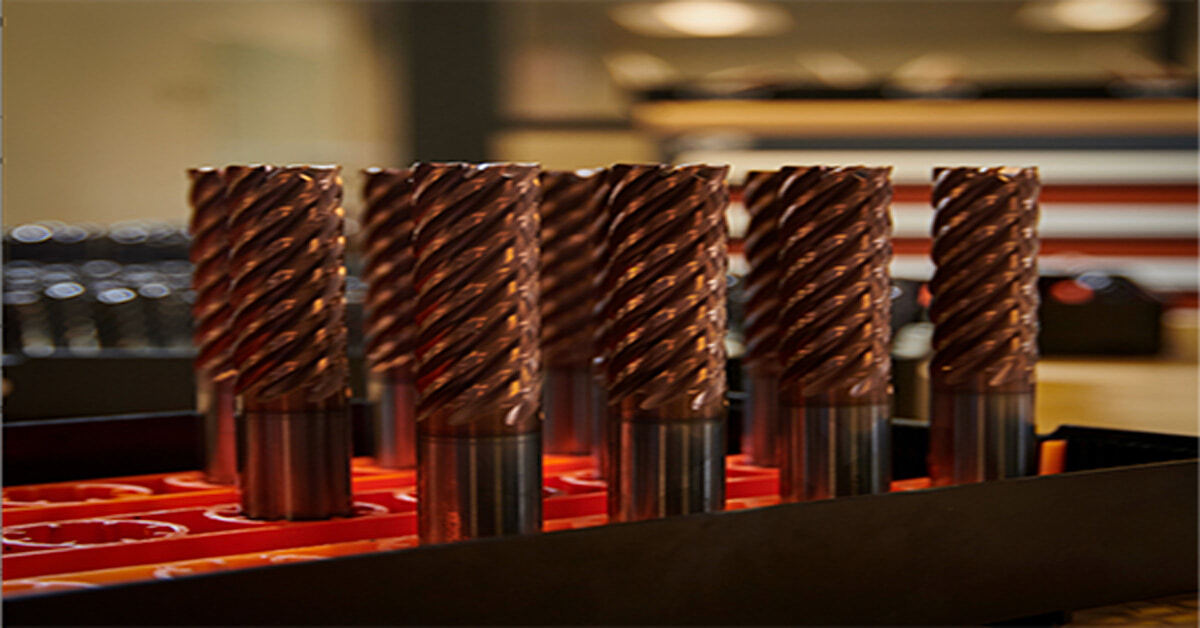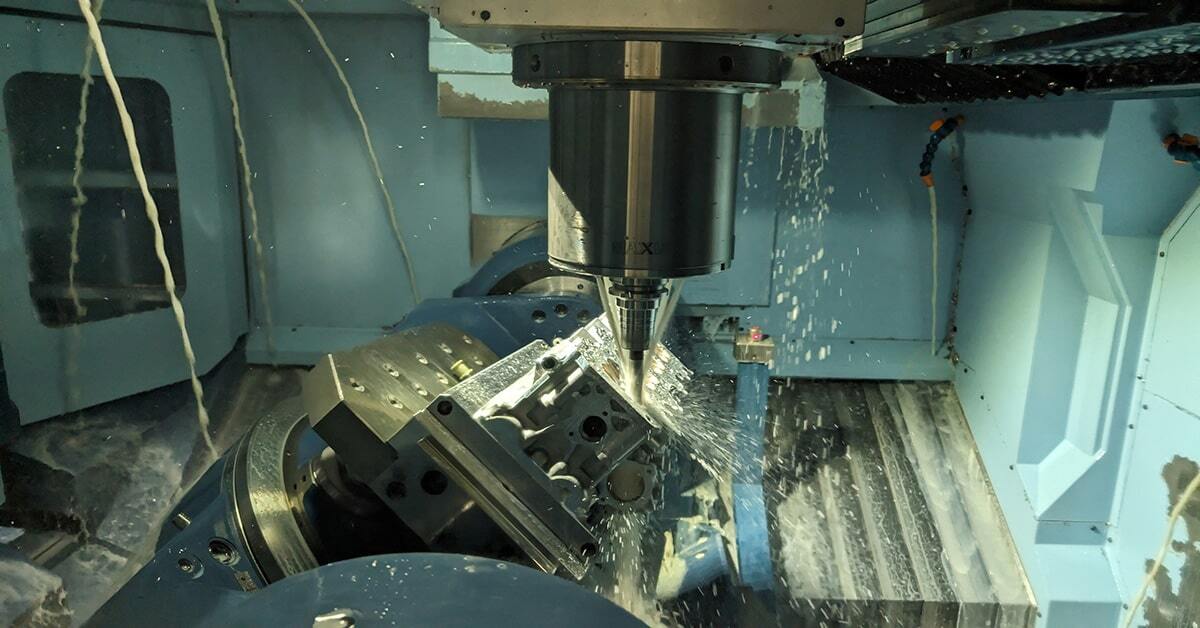Why Should I Use Multi-Flute End Mills?
Posted by Cam Glass on 03.27.25
Photo by StaySocial
In the machining world, the evolution and continued refinement of precision cutting tools have been crucial to the efficiency and innovation of manufacturing processes. Though it may seem to be a small detail in the vast world of manufacturing, the advancement of cutting edge technology has been integral to the advancement of many industries worldwide.
The multi-flute end mill, defined as "a cutting tool with five or more flutes, designed for various milling operations," is a testament to these innovations. It offers precise advantages to machinists that give them leverage for their milling operations.
In this article, we'll discuss the various benefits of multi-flute end mills, analyzing their design, application, and lineage in modern machining.
The Evolution of Milling Cutters
Historically, milling- and the development of the modern end mill have been crucial to the rise of industrial metal cutting. The early and straightforward single-flute designs from the late 19th century were adapted into 2 and 3-flute cutters, as increasing flute count was shown to improve cutting stability.
From there, the common problems and challenges paved the way for new ideas and technologies, such as introducing carbon-tipped end mills in the 1940s to increase heat resistance and durability or tool coatings in the 1950s to extend tool life.
Also introduced in the 1940s (and made available in the 1950s) were the original NC machines, setting the stage for the rise of the CNC manufacturing industry.

The rise of CNC machining in the 60s and 70s brought previously unreachable geometries to the forefront of the industry. With this, 4 and 5 flute end mills found their way to the mainstream. By the 80s, 5 and 6-flute end mills featuring new variable pitch and helix designs supported advancements to reduce chatter and improve surface finish.
By the 1990s, coatings such as TiAlN (Titanium aluminum nitride) and TiCN (Titanium carbo-nitride) were commonplace to enhance cut performance in hard materials.
Specifically, TiAlN provides better heat resistance, making it suitable for dry cutting and harder materials. At the same time, TiCN improves lubricity and wear resistance. The use of these coatings typically depends on the specific workpiece material since different materials require different solutions.
In the 21st century, what we now refer to as multi-flute end mills became the standard for high-speed cutting operations. Within the past fifteen years, complex technological integrations such as "smart tooling," which provided real-time feedback to machinists, entered the industry, giving machinists insights and cutting data previously unavailable.
These days, AI-driven optimizations have pushed machining to new heights, with concepts like predictive modeling and digital twin technology representing the next frontier in the same metal-cutting industry that began with single flute milling cutters not two hundred years ago.
Understanding Flute Design
If you're already a machinist, this may seem elementary, but understanding the importance of flute design is a critical aspect of machining. A "flute" refers to the helical (or straight) grooves running along the cutting edge, channeling chips away from the cutting surface and allowing cooling during operation.

Photo by Stay Social
Flute design significantly impacts performance and application, and the number of flutes directly affects the end mill's speed, feed rate, and finish quality. In addition to flute count, other aspects of flute design crucial to metal cutting include:
-helix angle: the angle of the flute relative to the cutting surface
-flute shape and geometry: flute geometry directly impacts chip evacuation and cutting stability, and flute shape and length impacts tool deflection and surface finish
-coatings and material type: impact how the flutes handle heat, friction, and wear
The Rise of Multi-Flute End Mills
As the industry has changed and standards for quality have continuously risen over the years, the need for increased efficiency and surface finish has driven the industry-wide transition from single or double-flute cutters to the common employment of multi-flute end mills.
The benefits of having more flutes reflect on the work created from their utilization. While manufacturers continue to research and develop significant innovations in their own respective industries, the precision they demand ensures that these end mills are here to stay.
Advantages of Multi-Flute End Mills
Multi-flute end mills provide several key advantages that solve the needs of modern manufacturers. Their proven value in increasing efficiency and milling performance speaks to their ever-growing popularity within the industry, and just about every large-scale business that fabricates with metal will have them at their disposal.
Let's outline the advantages of these milling cutters below:
Enhanced Material Removal Rates
One of the main advantages of employing multi-flute end mills is their ability to achieve higher material removal rates. Since they have more cutting edges that engage the workpiece simultaneously, these cutters can remove material much more efficiently than end mills with fewer flutes.
This efficiency reduces cycle times, increasing productivity in high-volume production settings.
Superior Surface Finish
Multi-flute end mills are well regarded for their ability to produce superior surface finishes. Their increased flute count reduces the size of stepovers between cuts, which shrinks the scallop height left on the workpiece.
This size reduction is particularly beneficial when working with pieces that require high surface quality and is especially valuable to manufacturers within the aerospace and automotive industries.
Improved Tool Life
By increasing the end mill's flute count, the cutter's individual flute load reduces, improving the total distribution of cutting forces. Because of this, multi-flute end mills are less prone to chipping and wear, and they last significantly longer than the cutters that came before them.
Additionally, the lower chip load per flute means that less machine power is needed to maintain cutting performance. This not only reduces tool wear but it also minimizes stress on the machine spindle, which improves both tool and machine longevity.
Since these end mills last longer, manufacturers pay less in tool costs over time, proving crucial to optimizing their operational overhead costs.
However, it is important to note that while individual flute load reduces, total tool load does not change, and higher flute counts can generate additional heat if not managed correctly, potentially decreasing the tool's total lifespan.
Versatility in Application
Multi-flute end mills are pretty versatile for several different applications. These cutters don't discriminate what material they're working with and perform consistently across various metals, alloys, and composites. Whether working with Ferrous or non-ferrous materials, these milling cutters are up to the task.
This adaptability proves invaluable in many industrial sectors, ranging from medical device manufacturing to the creation of airplanes flying out of your local airport at this very moment.
(It's good to note that when milling softer materials such as aluminum, 2 or 3-flute cutters are still found to be more effective due to their better chip clearance.)
Greater Tool Rigidity and Core Strength
Given that multi-flute end mills feature an increased flute count, they naturally have a larger core diameter (the central portion of the tool that runs a long its axis.) This larger core improves the tools rigidity, providing it more resistance against deflection during high-load operations.
Also, this added stiffness allows machinists to take longer axial cuts while maintaining tighter tolerances- especially in deep pockets or tight cavities.
Although these radial depths of cut are typically more shallow, the gained length of engagement helps to balance the material removal and reduces the risk of tool breakage.
Key Factors to Consider for Using Multi-Flute End Mills
While these advantages are undoubtedly compelling, it's essential to consider the factors that maximize their benefit.

Photo by Jay Alexander on Unsplash
Optimal Cutting Parameters
To achieve the optimal performance that machinists require, parameters such as identifying optimal speeds and feeds and cut depth must be carefully considered.
Depending on the machined material and the end mill's design specifics, adjustments may be necessary. Using the correct parameters ensures efficient chip evacuation and minimizes the risk of potential tool breakage.
Machine Tool Compatibility
A multi-flute end mill's effectiveness hinges upon the capabilities of the machine it's working with. Highly rigid machines with advanced control systems are better suited to handle the operational demands these milling cutters feature for in the first place.
Chip Evacuation Challenges
Lastly, since multi-flute end mills contain more flutes, these flutes are narrower than what you'd see on a 2 or 3-flute end mill. These narrow flutes can present challenges in chip evacuation, especially when milling deep cavities or pockets.
If you're milling with an end mill with five or more flutes, take the necessary precautions to prevent chip recutting or reduce tool life and performance. Proper coolant flow, air blasts, and high-pressure evacuation systems can mitigate these risks.
Conclusion
The advantages of using multi-flute end mills position them as a fundamental pillar of modern machining. Their ability to enhance material removal, deliver outstanding surface finishes, and last longer than their predecessors makes them critical in high-precision manufacturing operations.
As industry demand continues to morph and evolve, the role of multi-flute end mills and other sophisticated tooling options will only expand, furthering innovations and setting the stage for bigger and better technologies in the future. Embracing these advantages as a manufacturer can lead them to new heights of efficiency and precision, securing their competitive edge and continuously optimizing their budget for maximum success.
If reading this article has given you the motivation you need to hop on the train and start utilizing multi-flute end mills, look no further than Sonic Tools. We've meticulously designed our newly released multi-fluters to help you achieve maximum precision and durability- no matter the operation.

Graphic by Cam Glass
Innovation and tool quality are two of the multiple cornerstones around which we base our construction, and we're committed to providing machinists and manufacturers with cutting-edge (get it) solutions that exceed standards across the board.
When you choose Sonic Tools, you're not just investing in yourself but also in the future and spirit of American manufacturing. Embrace innovation and experience the difference in production and quality. Remember- Better Tools, Better Results.

